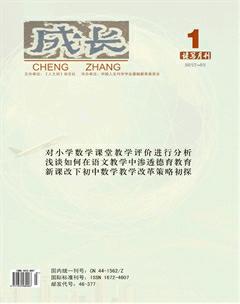Center for the Future of Museums
Introduction
As I wrestled with this fifty edition of trendwatch,I realized that for the first time the report has a unifying theme,even if it is one that is not easy to state.The topics that emerged from my scanning last year--the stories featured in Dispatches form the Future of Museums,yet more stories I book marked in Diigo,sessions at the annuat meeting,buzz at conferences--all revolve in some way around identify.Existential stuff for a futurist,but grounded in an examnation of five tangible trends.
This issue opens with a chapter on the future of labor--a abroad look at all the ways that work and the workplace are changing.It is a compliceted theme:big and messy and important.But I decided these topics are too important to give them a pass .Knowing how widely Trendswatch is used with museum staff.
Labor3.0:new jobs ,or a job less future?
In the last two centuries,labor provided from the farm and workshop to the factory and the office.Now,as we enter the 21st century ,work is again being radically reshaped by technology.
Culture and economic forces.Full-time work is fragmenting into
the “gig” economy of Internet-powered freelance work.Looking
Forward,just as the assembly line created massive labor disruptions in the 20th century,robots and artificinal intelligence
Will reshape the very nature of work,culture and our economy.
Everything about labor is coming into question,starting with when and where we work.Almost a quarter of all workers spend all or part of their day working from home,and figure is even higher for people with a colloege degree.Talk of “work-life balance is morphing into a dialogue about “work-life blending as it becomes increasingly difficult to compartmentalize the two.
While a lot of work still gets done in a physical office,we are tinkering in significant ways with how that offices is run.The Dreaded ritual of the annual performance appraisal is coming under fire,both from unhappy managers and from researchers who demonstrate that nagetive feedback actually makes it harder for people to improve.
Museums Might want to...
Monitor the changing workforce in their communities and assess its needs.When is the most convenient time for people to visit the museum?What programs and service do they want?Perhaps there in a need for co-working spaces-aniche some libraries are already stepping in to fill.This shift could advance museum is missions and generate revenue from underutilized space.
Museums can not compete with the private scetor on wages.But if they are willing to abandon outmoded practices,they can become the ultimate cool,creative place to work,so much so that the best and bringhtest are willing to sacrifice income to work in the field.This does not have to mean ditching the org chart for a holacracy.
Confront economic inequities in our sector:the pay ratio between directions and front-line staff, the consequences of not paying a living wage and debt young people assume in order to enter the profession .In addition to the need for museums to address this as a field,individual museums can assess their own internal practices,explore the values that could underpin reform,and change their policies and practices accordingly.
Me/We/Here/There: museums and the matrix of place-bassed augmented device
Augmented reality(AR) and virtal reality(VR) are portals to other and times (reality or imagined).They can be enchanted mirrors ,offering reflections lf the world as it could be-more exciting ,interesting and informative.AR and VR hold promise and perit for museums as well.If AR and VR experiences become both affordable and widely accessible,museuns will need to sharpen their positioning and value proposition with their communities.
VR and AR have made huge strides in the past couple decades.Now the software creating these experiences is quickly becoming more sophisticated ,while the gear itself becomes smaller,lighter and less expersive.This rapid evolution is largely deiven by the prospect of huge payoffs from the lucrative world of online gaming ,but games have a venerable history of being hijacked for other purposes.
What This Means for Museums
Museums,along with print journalism and classical music,have been steadily losing market share to other pastimes.VR and AR will provide new ways to share and access expertise.Not every museum can have an in-house conservator,packer and shipper or mount marker.
What Might Want to...
Experiences with offing visitor AR and VR experiences,using existing or original museum-related content to better learn which tools afford the best in-museum experience and upselling opportunities like 3D IMAX films.Content production companies and artists at below-market rates while the major funding source for content development remains advertising companies and hardware-specific deals.By partnering with companies launching VR and AR programs,such projects can be accomplished on a nonprofit budget.
Adopt existing tech and adapt it to their purposes.Give every museum member a Google Cardboard headset and release new content on a rugular basis: behind-the-scence tours ,a preview of the new special exhibit,a mini-doc of the last paleontology dig or the year is highlights delivered in a tete-a-tata with the director as you sit in her office.
作者簡介:石晓惠(1991.3-),女,汉族,籍贯:山东滨州人,齐鲁工业大学大学艺术学院,15级在读研究生,硕士学位,专业:展示设计,研究方向:展示设计。
参考文献:
[1]展示设计/李远主编.北京:中国电力出版社,2009
[2]展示陈列艺术设计/吴诗中主编.北京:高等教育出版社,2012.9

